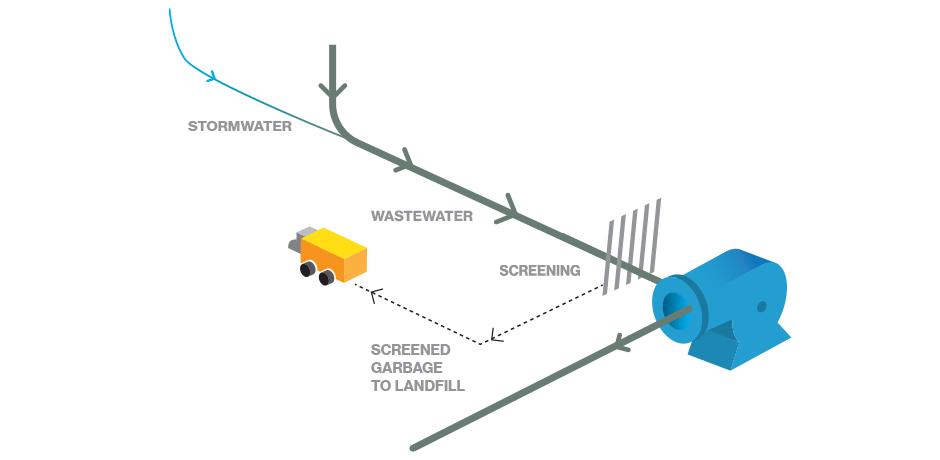Ecological Effect of Waste Water Treatment: What You Need to Know
Strategic Approaches to Enhance Drainage Therapy Effectiveness and Lessen Ecological Effect
In the realm of drainage therapy, the pursuit for enhanced efficiency and reduced ecological impact is a continuous obstacle that requires tactical options. As culture grapples with the imperative to take care of water resources sustainably, a nuanced technique comes to be crucial. The assimilation of sophisticated therapy modern technologies, energy-efficient procedures, source recuperation approaches, boosted nutrient removal methods, and wise monitoring and control systems represents a diverse structure for dealing with these pushing concerns. What lies at the core of this complicated web of methods is the possible to revolutionize the means we approach waste water treatment, not simply as a process of disposal, yet as a beneficial chance for innovation and ecological stewardship.
Advanced Therapy Technologies
Advanced membrane purification systems have changed advanced wastewater therapy procedures, considerably boosting the removal of impurities. These ingenious systems function by compeling water via a semi-permeable membrane, effectively separating impurities from the water stream. The membrane's tiny pores trap contaminants such as bacteria, infections, and suspended solids, enabling only cleansed water to pass through. This technology has confirmed to be extremely effective in removing a broad range of impurities, including drugs, heavy steels, and organic substances, which are usually challenging to remove through traditional therapy approaches.
Additionally, membrane layer filtering systems offer countless advantages over standard therapy methods. Additionally, these systems are extremely versatile and can be conveniently incorporated into existing treatment plants or utilized as standalone units for decentralized applications.
Energy-Efficient Procedures
The combination of energy-efficient processes in wastewater therapy systems is crucial for enhancing source application and reducing functional prices. One vital approach to enhancing energy effectiveness in wastewater therapy is the application of advanced aeration systems, such as fine bubble diffusers or surface area aerators, which can enhance oxygen transfer efficiency and decrease energy usage.
In addition, enhancing procedure control and automation with making use of sophisticated sensing units and keeping track of systems can improve general energy effectiveness by changing operations in real-time based on actual demand and conditions. Implementing energy audits and on a regular basis monitoring power efficiency signs are necessary methods to recognize locations for enhancement and track energy-saving efforts successfully. In general, the adoption of energy-efficient processes in wastewater treatment not just profits the atmosphere but also adds to long-lasting expense financial savings and functional sustainability.
Source Recuperation Methods
With a concentrate on optimizing source utilization and sustainability in wastewater treatment systems, the implementation of source healing techniques becomes a pivotal aspect in boosting operational efficiency. Source healing methods in wastewater treatment entail the identification and removal of useful resources from the waste stream, consequently transforming what was as soon as considered waste into a valuable possession. By applying source recuperation strategies such as nutrient removal and recovery, power generation from see here natural issue, and the manufacturing of multiple-use water, wastewater therapy plants can lessen ecological effect while making best use of performance.

Boosted Nutrient Elimination Methods
Executing innovative nutrient elimination methods is vital for maximizing the effectiveness of wastewater therapy systems. One of the essential methods used for boosted nutrient removal is the procedure of organic nutrient removal (BNR), which involves the elimination of nitrogen and phosphorus through biological procedures.

In addition to BNR, advanced treatment methods such as membrane bioreactors (MBRs) and built wetlands can also be employed to enhance nutrient elimination efficiency. By incorporating these advanced nutrient removal strategies right into wastewater therapy systems, markets and municipalities can efficiently lower nutrient contamination and secure the setting.
Smart Tracking and Control Solution
Utilizing sophisticated technology, the integration of wise monitoring and control systems reinvents try this out the operational efficiency of wastewater therapy centers. These systems integrate sophisticated sensors and information analytics to continually check vital specifications such as pH blog levels, turbidity, dissolved oxygen, and flow prices in real-time. By gathering and assessing this data, drivers can obtain useful insights right into the performance of the therapy processes, enabling proactive adjustments to maximize treatment effectiveness.
Smart surveillance and control systems additionally support remote surveillance capabilities, enabling drivers to gain access to real-time information and control features from off-site places. This remote ease of access enhances operational adaptability and responsiveness, allowing quick interventions in instance of system malfunctions or fluctuations in influent high quality. In addition, the anticipating upkeep capabilities of these systems aid stop tools failures and decrease downtime, ultimately improving the overall integrity of wastewater therapy procedures (Waste Water Treatment).
Verdict
In final thought, calculated strategies such as sophisticated therapy modern technologies, energy-efficient procedures, resource recuperation methods, enhanced nutrient removal techniques, and wise tracking and control systems play a critical function in boosting wastewater treatment performance and minimizing environmental effect. By applying these techniques, wastewater therapy plants can improve their overall performance, lower energy intake, recuperate useful sources, and ensure compliance with environmental laws. These methods are vital for lasting and efficient wastewater management techniques.

In conclusion, tactical strategies such as advanced therapy technologies, energy-efficient procedures, resource recuperation methods, enhanced nutrient removal strategies, and wise surveillance and control systems play a crucial function in boosting wastewater therapy performance and decreasing environmental effect.